 Jimmy Edgar is Warp's most recent signing, a sweet and vulnerable19-year old Caucasian from Detroit who allegedly spent his formativeyears playing Detroit raves alongside Juan Atkins, Kevin Saunderson andDerrick May. His new EP Access Rhythmproves that Edgar has inherited none of the genius of his culturalforefathers. This EP contains four faceless tracks of largelyinstrumental hip-hop, made specifically for that growing demographic ofclueless, rich, vaguely urban white boys wearing backpacks. JimmyEdgar's music sounds almost identical to his labelmate Scott Herren'sPrefuse 73 project, an uncomfortable similarity which makes the musicall the more excruciating to listen to. It shows a serious lack ofjudgment on the part of Warp Records that Edgar's promo wasn'timmediately tossed into the "sounds like everything else" pile.Promotional material for the EP has the audacity to compare Edgar'stalentless Powerbook fuckery to the Neptunes. On their very worst day,Pharrell Williams and Chad Hugo could easily kick this guy's lily-whiteGrosse Pointe ass all the way back to design school. Edgar's clean,angular production tries to achieve some of the same innovation as hisobvious hip-hop influences, but the kid is seriously lost when it comesto creating a beat that is interesting enough to listen to for longerthan 10 seconds. Flip over any Timbaland-produced 12" to theinstrumental side, and you'll hear what Jimmy Edgar wishes he soundedlike, but never will. About his style, Edgar says: "My music has a hugeDetroit Techno influence, but I wanted to go even further beyond that,to the point where it feels literally like Detroit itself." Huh? Ifanyone can figure out what that load of bullshit is supposed to mean,be sure to let me know. On a positive note, it's not too late for JimmyEdgar; he's still young, and there's still time for him to enroll incommunity college or learn a trade.
Jimmy Edgar is Warp's most recent signing, a sweet and vulnerable19-year old Caucasian from Detroit who allegedly spent his formativeyears playing Detroit raves alongside Juan Atkins, Kevin Saunderson andDerrick May. His new EP Access Rhythmproves that Edgar has inherited none of the genius of his culturalforefathers. This EP contains four faceless tracks of largelyinstrumental hip-hop, made specifically for that growing demographic ofclueless, rich, vaguely urban white boys wearing backpacks. JimmyEdgar's music sounds almost identical to his labelmate Scott Herren'sPrefuse 73 project, an uncomfortable similarity which makes the musicall the more excruciating to listen to. It shows a serious lack ofjudgment on the part of Warp Records that Edgar's promo wasn'timmediately tossed into the "sounds like everything else" pile.Promotional material for the EP has the audacity to compare Edgar'stalentless Powerbook fuckery to the Neptunes. On their very worst day,Pharrell Williams and Chad Hugo could easily kick this guy's lily-whiteGrosse Pointe ass all the way back to design school. Edgar's clean,angular production tries to achieve some of the same innovation as hisobvious hip-hop influences, but the kid is seriously lost when it comesto creating a beat that is interesting enough to listen to for longerthan 10 seconds. Flip over any Timbaland-produced 12" to theinstrumental side, and you'll hear what Jimmy Edgar wishes he soundedlike, but never will. About his style, Edgar says: "My music has a hugeDetroit Techno influence, but I wanted to go even further beyond that,to the point where it feels literally like Detroit itself." Huh? Ifanyone can figure out what that load of bullshit is supposed to mean,be sure to let me know. On a positive note, it's not too late for JimmyEdgar; he's still young, and there's still time for him to enroll incommunity college or learn a trade. Jimmy Edgar is Warp's most recent signing, a sweet and vulnerable19-year old Caucasian from Detroit who allegedly spent his formativeyears playing Detroit raves alongside Juan Atkins, Kevin Saunderson andDerrick May. His new EP Access Rhythmproves that Edgar has inherited none of the genius of his culturalforefathers. This EP contains four faceless tracks of largelyinstrumental hip-hop, made specifically for that growing demographic ofclueless, rich, vaguely urban white boys wearing backpacks. JimmyEdgar's music sounds almost identical to his labelmate Scott Herren'sPrefuse 73 project, an uncomfortable similarity which makes the musicall the more excruciating to listen to. It shows a serious lack ofjudgment on the part of Warp Records that Edgar's promo wasn'timmediately tossed into the "sounds like everything else" pile.Promotional material for the EP has the audacity to compare Edgar'stalentless Powerbook fuckery to the Neptunes. On their very worst day,Pharrell Williams and Chad Hugo could easily kick this guy's lily-whiteGrosse Pointe ass all the way back to design school. Edgar's clean,angular production tries to achieve some of the same innovation as hisobvious hip-hop influences, but the kid is seriously lost when it comesto creating a beat that is interesting enough to listen to for longerthan 10 seconds. Flip over any Timbaland-produced 12" to theinstrumental side, and you'll hear what Jimmy Edgar wishes he soundedlike, but never will. About his style, Edgar says: "My music has a hugeDetroit Techno influence, but I wanted to go even further beyond that,to the point where it feels literally like Detroit itself." Huh? Ifanyone can figure out what that load of bullshit is supposed to mean,be sure to let me know. On a positive note, it's not too late for JimmyEdgar; he's still young, and there's still time for him to enroll incommunity college or learn a trade.
Jimmy Edgar is Warp's most recent signing, a sweet and vulnerable19-year old Caucasian from Detroit who allegedly spent his formativeyears playing Detroit raves alongside Juan Atkins, Kevin Saunderson andDerrick May. His new EP Access Rhythmproves that Edgar has inherited none of the genius of his culturalforefathers. This EP contains four faceless tracks of largelyinstrumental hip-hop, made specifically for that growing demographic ofclueless, rich, vaguely urban white boys wearing backpacks. JimmyEdgar's music sounds almost identical to his labelmate Scott Herren'sPrefuse 73 project, an uncomfortable similarity which makes the musicall the more excruciating to listen to. It shows a serious lack ofjudgment on the part of Warp Records that Edgar's promo wasn'timmediately tossed into the "sounds like everything else" pile.Promotional material for the EP has the audacity to compare Edgar'stalentless Powerbook fuckery to the Neptunes. On their very worst day,Pharrell Williams and Chad Hugo could easily kick this guy's lily-whiteGrosse Pointe ass all the way back to design school. Edgar's clean,angular production tries to achieve some of the same innovation as hisobvious hip-hop influences, but the kid is seriously lost when it comesto creating a beat that is interesting enough to listen to for longerthan 10 seconds. Flip over any Timbaland-produced 12" to theinstrumental side, and you'll hear what Jimmy Edgar wishes he soundedlike, but never will. About his style, Edgar says: "My music has a hugeDetroit Techno influence, but I wanted to go even further beyond that,to the point where it feels literally like Detroit itself." Huh? Ifanyone can figure out what that load of bullshit is supposed to mean,be sure to let me know. On a positive note, it's not too late for JimmyEdgar; he's still young, and there's still time for him to enroll incommunity college or learn a trade. Imagine my astonishment when this unassuming new CD from Amsterdamproducer Tom Holkenborg turned out to be the most painfully dire albumI've heard in a decade. Radio JXL: A Broadcast From The Computer Hell Cabinis so entirely rotten on all fronts, it's almost refreshing. From theawful album title to the plug-ugly cover art, this is the album to playfor people who think that everything has some kind of redeeming value.This proves that those people are wrong. Radio JXL has noredeeming value. It has negative redeeming value. The mere existence ofthis album actually detracts from the work that good musicians aredoing. Junkie XL is what would happen if you multiplied Fatboy Slim'sworst song times Moby's worst song to the power of The Crystal Method'sworst album. It is slickly-produced stadium-rave trash for the newgeneration of retarded fat girls on MDMA. It's the soundtrack togetting a toothy blowjob from a guy in a rainbow wig and plasticclothes. An array of guest artists humiliate themselves by contributingguest vocals on this atrocity. Peter "Legalize It" Tosh goes throughthe Kingston motions over Holkenborg's track, one of the moreoffensive, ill-conceived desecrations of dub yet conceived by aEuropean. Dave Gahan participates in an overblown travesty whichmanages to make latter-day Depeche Mode sound positively ingenious bycontrast. Why has Gary Numan lowered himself to contributing vocals to"Angels," a song which had me pining for the glory days of top-40 raveanthems from the likes of Praga Khan and Sunscreem, which seem sotasteful in retrospect. I'm not even going to mention the tracks withChuck D and Robert Smith. Fuck, I mentioned them. Sorry. Remember whenMTV "broke" electronica circa 1994, and every suburban kid in Americawas running out to Circuit City to pick up the newest Urbal Beatscompilation? Tom Holkenborg doesn't think anything has changed in theintervening decade. He lives in a universe where The Prodigy still havenumber one hits and all that every consumer really wants is a raveremix of an Elvis Presley song. Which he provides, by the way, in theform of "A Little Less Conversation," a catastrophe of near-Biblicalproportions. I couldn't bring myself to listen to the bonus disc ofremixes. Frankly, I'm surprised I got as far as I did.
Imagine my astonishment when this unassuming new CD from Amsterdamproducer Tom Holkenborg turned out to be the most painfully dire albumI've heard in a decade. Radio JXL: A Broadcast From The Computer Hell Cabinis so entirely rotten on all fronts, it's almost refreshing. From theawful album title to the plug-ugly cover art, this is the album to playfor people who think that everything has some kind of redeeming value.This proves that those people are wrong. Radio JXL has noredeeming value. It has negative redeeming value. The mere existence ofthis album actually detracts from the work that good musicians aredoing. Junkie XL is what would happen if you multiplied Fatboy Slim'sworst song times Moby's worst song to the power of The Crystal Method'sworst album. It is slickly-produced stadium-rave trash for the newgeneration of retarded fat girls on MDMA. It's the soundtrack togetting a toothy blowjob from a guy in a rainbow wig and plasticclothes. An array of guest artists humiliate themselves by contributingguest vocals on this atrocity. Peter "Legalize It" Tosh goes throughthe Kingston motions over Holkenborg's track, one of the moreoffensive, ill-conceived desecrations of dub yet conceived by aEuropean. Dave Gahan participates in an overblown travesty whichmanages to make latter-day Depeche Mode sound positively ingenious bycontrast. Why has Gary Numan lowered himself to contributing vocals to"Angels," a song which had me pining for the glory days of top-40 raveanthems from the likes of Praga Khan and Sunscreem, which seem sotasteful in retrospect. I'm not even going to mention the tracks withChuck D and Robert Smith. Fuck, I mentioned them. Sorry. Remember whenMTV "broke" electronica circa 1994, and every suburban kid in Americawas running out to Circuit City to pick up the newest Urbal Beatscompilation? Tom Holkenborg doesn't think anything has changed in theintervening decade. He lives in a universe where The Prodigy still havenumber one hits and all that every consumer really wants is a raveremix of an Elvis Presley song. Which he provides, by the way, in theform of "A Little Less Conversation," a catastrophe of near-Biblicalproportions. I couldn't bring myself to listen to the bonus disc ofremixes. Frankly, I'm surprised I got as far as I did. samples:
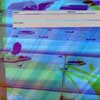 It's hard to describe the sort of movements that music evolve towithout giving it a genre name that gets used, then overused, thencompletely hated and rejected only a couple years later. I do like whatI'm hearing, however, a LOT. Trapist are the latest in a line oftalented collective players who integrate some of the elements thehigh-brow fashionable snotty music press faves have introduced over thelast couple years (software, electronic reprocessing) with honedplaying skills that can lend to collective improvisational pieces, andheavy tendencies towards actual song structure (yes, it's nice not tohear "jazz" fans noodling around with no goal). On Ballroom,the Viennese trio's first studio record, all elements come togethergracefully for an amazing listen. The trio consists of MartinBrandlmayr, Martin Siewart, and Joe Williamson: names which haveappeared in Radian, and alongside people like Christian Fennesz, DeanRoberts and Werner Dafeldecker, Stefan Schneider, Ken Vandermark, KevinDrumm, and plenty more. Comparisons will no doubt be drawn to thesparse guitar work of quieter Tortoise and Angelo Badalamenti andgroups like Nudge and latter-day Talk Talk, but Trapist tend to explorethings a bit deeper, with songs that stretch well past the 15 minutemark as opposed to collecting between eight and ten 3-5 minute tunes.Songs often open with light brushed drum sounds, double bass andguitar, but are soon joined with unobtrusive keyboards, subtleelectronic effects, percussion, and rhythmic noise. While Ballroomis already one of my most frequently played albums of the young year,it's not hard to wonder if this stuff will catch on. Bands and criticsmay complain about the post-rock pigeonholing but it did provide somesort of attention and leverage to a lot of groups' budding careers. Ifthis stuff never catches on, it'll be difficult for a number of reallygreat groups to book shows, get out of their remote areas (Dean Robertsis in Australia, Nudge is in Oregon) and help evolve music to the nextlevel.
It's hard to describe the sort of movements that music evolve towithout giving it a genre name that gets used, then overused, thencompletely hated and rejected only a couple years later. I do like whatI'm hearing, however, a LOT. Trapist are the latest in a line oftalented collective players who integrate some of the elements thehigh-brow fashionable snotty music press faves have introduced over thelast couple years (software, electronic reprocessing) with honedplaying skills that can lend to collective improvisational pieces, andheavy tendencies towards actual song structure (yes, it's nice not tohear "jazz" fans noodling around with no goal). On Ballroom,the Viennese trio's first studio record, all elements come togethergracefully for an amazing listen. The trio consists of MartinBrandlmayr, Martin Siewart, and Joe Williamson: names which haveappeared in Radian, and alongside people like Christian Fennesz, DeanRoberts and Werner Dafeldecker, Stefan Schneider, Ken Vandermark, KevinDrumm, and plenty more. Comparisons will no doubt be drawn to thesparse guitar work of quieter Tortoise and Angelo Badalamenti andgroups like Nudge and latter-day Talk Talk, but Trapist tend to explorethings a bit deeper, with songs that stretch well past the 15 minutemark as opposed to collecting between eight and ten 3-5 minute tunes.Songs often open with light brushed drum sounds, double bass andguitar, but are soon joined with unobtrusive keyboards, subtleelectronic effects, percussion, and rhythmic noise. While Ballroomis already one of my most frequently played albums of the young year,it's not hard to wonder if this stuff will catch on. Bands and criticsmay complain about the post-rock pigeonholing but it did provide somesort of attention and leverage to a lot of groups' budding careers. Ifthis stuff never catches on, it'll be difficult for a number of reallygreat groups to book shows, get out of their remote areas (Dean Robertsis in Australia, Nudge is in Oregon) and help evolve music to the nextlevel.samples:
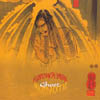 The last few years have seen popular movements in the development ofimprovisational rock music, whether it's influenced by Anglo folk,experimental, or jazz music. There's another dimension, however, whichin my mind takes the music up a notch: the psychedelic/prog bit. Byincorporating the colorful drug-crazed lunacies of a few decades' past,Ghost have been pleasing very devoted international crowds for years,and it's no wonder, their songs are true songs and not just a bunch ofpeople farting around who can barely play their instruments. Hypnotic Underworldis easily one of 2004's first fantastic albums of the year, with thefamiliar genre-bending stretches of Ghost and shimmering over-the-topproduction by Taishi Takizawa. It opens with a stunning four-partmovement of "Hypnotic Underworld," and the slow building 13.5 minute"God Took a Picture of His Illness On This Ground." Here, a commandingbassline underscores saxophone, malleted drums, echoes and twitters ofsound effects, all contributing to an experience remeniscent of masterslike Taj Mahal Travelers and Magical Power Mako, siezing control of thesenses, disallowing much else to be paid attention to, other than themusic. Part two, "Escaped and Lost Down in Medina" picks up the pacewith a steady beat, a sea of other instruments (including prominentdrums, guitar, strings and piano), and a mesmerizing looped basslinethat doesn't change for the entire 7+ minutes. It acts as a perfectcrescendo on to the rest of the album as the buildup of sound andtension increases steadily through pretty much every cycle of the bassloop. The choral vocals of part three, "Aramaic Barbarous Dawn" ache tobe dragged out much longer than the 2+ minutes and scream of late 1960sacid-induced psychedelia before it quickly runs right into the22-second part four. From here on, the album picks up with variousstyles of rock, jazz, and sound textures, toying with pop tendenciesnearly all the time with instruments remeniscent of experimental pop ofyesteryear. Organ, harpsichord, tabla, sitar, and flute aren'tuncommonly found alongside squealy guitar solos and trancelike vocals.Whether the music conjures up images of babbling brooks and folkloreforests, staring endlessly into a clear starry night, the hellfire ofthe underworld, or completely dazed black light parties, the songs on Hypnotic Underworldare never weak or loosely strung along, and the album seemssurprisingly short at 70+ minutes. While I look forward to seeing themlive, I'd much rather be sitting on the grass outside rather than bestuck in a dirty rock club with an obnoxious cash machine jingling offin the distance.
The last few years have seen popular movements in the development ofimprovisational rock music, whether it's influenced by Anglo folk,experimental, or jazz music. There's another dimension, however, whichin my mind takes the music up a notch: the psychedelic/prog bit. Byincorporating the colorful drug-crazed lunacies of a few decades' past,Ghost have been pleasing very devoted international crowds for years,and it's no wonder, their songs are true songs and not just a bunch ofpeople farting around who can barely play their instruments. Hypnotic Underworldis easily one of 2004's first fantastic albums of the year, with thefamiliar genre-bending stretches of Ghost and shimmering over-the-topproduction by Taishi Takizawa. It opens with a stunning four-partmovement of "Hypnotic Underworld," and the slow building 13.5 minute"God Took a Picture of His Illness On This Ground." Here, a commandingbassline underscores saxophone, malleted drums, echoes and twitters ofsound effects, all contributing to an experience remeniscent of masterslike Taj Mahal Travelers and Magical Power Mako, siezing control of thesenses, disallowing much else to be paid attention to, other than themusic. Part two, "Escaped and Lost Down in Medina" picks up the pacewith a steady beat, a sea of other instruments (including prominentdrums, guitar, strings and piano), and a mesmerizing looped basslinethat doesn't change for the entire 7+ minutes. It acts as a perfectcrescendo on to the rest of the album as the buildup of sound andtension increases steadily through pretty much every cycle of the bassloop. The choral vocals of part three, "Aramaic Barbarous Dawn" ache tobe dragged out much longer than the 2+ minutes and scream of late 1960sacid-induced psychedelia before it quickly runs right into the22-second part four. From here on, the album picks up with variousstyles of rock, jazz, and sound textures, toying with pop tendenciesnearly all the time with instruments remeniscent of experimental pop ofyesteryear. Organ, harpsichord, tabla, sitar, and flute aren'tuncommonly found alongside squealy guitar solos and trancelike vocals.Whether the music conjures up images of babbling brooks and folkloreforests, staring endlessly into a clear starry night, the hellfire ofthe underworld, or completely dazed black light parties, the songs on Hypnotic Underworldare never weak or loosely strung along, and the album seemssurprisingly short at 70+ minutes. While I look forward to seeing themlive, I'd much rather be sitting on the grass outside rather than bestuck in a dirty rock club with an obnoxious cash machine jingling offin the distance.samples:
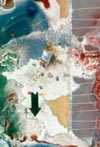 Massachusetts-based Sedimental Records has been in sporadic activitysince 1993. They don't put out records often, but when they do it'sclearly a labor of love. Past releases skip across what is either ahighly idiosyncratic or just plain broadminded survey of experimentalmusics, revealing a commendable focus on debut and early releases fromrelatively obscure artists. The packaging and presentation of thelabel's releases are consistently exceptional, though they operate bestas indicators of the keen interest and investment Sedimental brings tothe music itself. Late 2003 saw the release of five new titles, endinga period of stagnancy with quite a bang. The first of these comes fromTexas improvisers Tonalamotl, a revolving group of musicians who createslow-building textural immersions much in the traditional ofelectro-acoustic groups like AMM. All tracks were recorded live aroundthe surprisingly rock-ist core instrumentation of guitars and drums.These instruments become hardly recognizable, the guitars taking onthrobbing, motor-like sounds that ride the background much of the timeand drums sounding systematically disassembled, each piece of wood andmetal given its proper tinkering. The most interesting aspect ofTonalamotl's music is the way the group seems to confront theperformance space. Much of the sound on Mo(ve)mentsumfeels gathered via contact mics, scraping surfaces or mining the airaround the diligent performers, who move with the frenzied attention ofelectrons in an atomic cage. In a track performed at Austin's 33?Records, the store's door alarms, scattered coughs and floor creaksbecome lynch pins and transition markers in the drifting composition.Hundreds of sounds incapable of being passed off on keyboard or evendog whistle (both of which appear liberally) make up the bulk of theseoften subtle, though immediate pieces. Wind coming through the room onone track sounds like it could've been pulled from Alan Splet'sambient-industrial Eraserhead soundtrack; elsewhere what mustbe a keyboard drone meets distant percussive hammering to approximatethe sound of an idling engine, punctuated by the occasional cymbalcrash or drum kick. Moments like these abound, where splashes of therecognizable or the rough bring the listener out of the budding trancestate, face-to-face with the twitching human making all the racket. Theproduction is such that each exploited detail is respectfully capturedbut in a way that allows the rustic character of the music to bleedthrough. Even with this new release, their second, Tonalamotl remainsan enigmatic group, its members involved in various ways with other(unlikely) Texas bands such as At the Drive In, Trail of Dead, andWhite Heat. With the recording dates for these tracks stretching backto '97 and '98, it seems doubtful that the group will record again, allthe more reason to look for Mo(ve)mentsum now.
Massachusetts-based Sedimental Records has been in sporadic activitysince 1993. They don't put out records often, but when they do it'sclearly a labor of love. Past releases skip across what is either ahighly idiosyncratic or just plain broadminded survey of experimentalmusics, revealing a commendable focus on debut and early releases fromrelatively obscure artists. The packaging and presentation of thelabel's releases are consistently exceptional, though they operate bestas indicators of the keen interest and investment Sedimental brings tothe music itself. Late 2003 saw the release of five new titles, endinga period of stagnancy with quite a bang. The first of these comes fromTexas improvisers Tonalamotl, a revolving group of musicians who createslow-building textural immersions much in the traditional ofelectro-acoustic groups like AMM. All tracks were recorded live aroundthe surprisingly rock-ist core instrumentation of guitars and drums.These instruments become hardly recognizable, the guitars taking onthrobbing, motor-like sounds that ride the background much of the timeand drums sounding systematically disassembled, each piece of wood andmetal given its proper tinkering. The most interesting aspect ofTonalamotl's music is the way the group seems to confront theperformance space. Much of the sound on Mo(ve)mentsumfeels gathered via contact mics, scraping surfaces or mining the airaround the diligent performers, who move with the frenzied attention ofelectrons in an atomic cage. In a track performed at Austin's 33?Records, the store's door alarms, scattered coughs and floor creaksbecome lynch pins and transition markers in the drifting composition.Hundreds of sounds incapable of being passed off on keyboard or evendog whistle (both of which appear liberally) make up the bulk of theseoften subtle, though immediate pieces. Wind coming through the room onone track sounds like it could've been pulled from Alan Splet'sambient-industrial Eraserhead soundtrack; elsewhere what mustbe a keyboard drone meets distant percussive hammering to approximatethe sound of an idling engine, punctuated by the occasional cymbalcrash or drum kick. Moments like these abound, where splashes of therecognizable or the rough bring the listener out of the budding trancestate, face-to-face with the twitching human making all the racket. Theproduction is such that each exploited detail is respectfully capturedbut in a way that allows the rustic character of the music to bleedthrough. Even with this new release, their second, Tonalamotl remainsan enigmatic group, its members involved in various ways with other(unlikely) Texas bands such as At the Drive In, Trail of Dead, andWhite Heat. With the recording dates for these tracks stretching backto '97 and '98, it seems doubtful that the group will record again, allthe more reason to look for Mo(ve)mentsum now.samples:
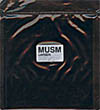 Larsen never lacked a sense of beauty. Even on the most catharticrushes of adrenalin guitar mayhem that erupted at opportune moments ontheir stunning Michael Gira-produced album Rever,they always had an air of ritual mystery and a mystical energy thatperhaps recalled other intense Europeans Deity Guns and Neubauten, witha nod to prime New York avant rock. There are ancient monumentalshadows looming over and cast by their muse. Having lost bassist SilviaGross to jazz, Larsen are now a quartet with a more stripped-down,instrumental sound, which is no doubt going to see them get a fewgodspeed comparisons. Every ringing guitar note and accordian dronehits home in an uplifting spirited enunciation of landscapes bothcinematic and emotional. It's no surprise to discover that they'veplayed gigs supporting Thalia Zedek, who no doubt found them kindredspirits. While on Rever there were occasional jousts of LiveSkull dual guitar hellfire, here, heavy ponderous drums hit home withthe same melancholic deliberation as Come and Thalia's more recent solorecordings. MUSM was originally a very limited US tour CD-R butis now getting a wider release on CD and vinyl. It opens with a collagefrom Larsen's long unavailable debut album, No Arms No Legs: Identification Problems and a couple of remastered tracks from that album which set the scene but are soon surpassed. Half of MUSMwas recorded as a soundtrack to Winsor McCay's animation"Cartoanimalettimatti." These five tracks are certainly rivetingstanding alone, more enticing melodic entanglements unfurling withevery repeat listening, yet it would've been nice to have seen some ofthe animations on the computer section of the CD-R. "How a MosquitoOperates" circles inexorably towards some bloody climax, and "TheSinking of the Lusitania" is suitably aquatic, each dramatic pausebetween chords seeming to let more water seep in. There is anunrecognizably mutated version of Syd Barret's "Vegetable Man," whichopens with an accordian drone elegy, before sleigh bells and guitarpangs rise slowly above creaking turnip brains. A short outtake from arecent rehearsal session ends the album with a hesitant question mark.However the highlight of MUSM might well be the film of Larsenperforming a majestic slow building instrumental in a Polish cathedral,not so much for the film itself which fades images of the band walkingthe glowing night time streets of Gdansk with their static stagepresence, but for the music which would have been nice to have had asregular audio. Maybe this is a hint of even better things to come andwill appear on a future album? Larsen have two more albums in thepipeline, including collaborations with Lustmord and Jarboe. If they'reeven half as fine as this, they'll be utterly essential.
Larsen never lacked a sense of beauty. Even on the most catharticrushes of adrenalin guitar mayhem that erupted at opportune moments ontheir stunning Michael Gira-produced album Rever,they always had an air of ritual mystery and a mystical energy thatperhaps recalled other intense Europeans Deity Guns and Neubauten, witha nod to prime New York avant rock. There are ancient monumentalshadows looming over and cast by their muse. Having lost bassist SilviaGross to jazz, Larsen are now a quartet with a more stripped-down,instrumental sound, which is no doubt going to see them get a fewgodspeed comparisons. Every ringing guitar note and accordian dronehits home in an uplifting spirited enunciation of landscapes bothcinematic and emotional. It's no surprise to discover that they'veplayed gigs supporting Thalia Zedek, who no doubt found them kindredspirits. While on Rever there were occasional jousts of LiveSkull dual guitar hellfire, here, heavy ponderous drums hit home withthe same melancholic deliberation as Come and Thalia's more recent solorecordings. MUSM was originally a very limited US tour CD-R butis now getting a wider release on CD and vinyl. It opens with a collagefrom Larsen's long unavailable debut album, No Arms No Legs: Identification Problems and a couple of remastered tracks from that album which set the scene but are soon surpassed. Half of MUSMwas recorded as a soundtrack to Winsor McCay's animation"Cartoanimalettimatti." These five tracks are certainly rivetingstanding alone, more enticing melodic entanglements unfurling withevery repeat listening, yet it would've been nice to have seen some ofthe animations on the computer section of the CD-R. "How a MosquitoOperates" circles inexorably towards some bloody climax, and "TheSinking of the Lusitania" is suitably aquatic, each dramatic pausebetween chords seeming to let more water seep in. There is anunrecognizably mutated version of Syd Barret's "Vegetable Man," whichopens with an accordian drone elegy, before sleigh bells and guitarpangs rise slowly above creaking turnip brains. A short outtake from arecent rehearsal session ends the album with a hesitant question mark.However the highlight of MUSM might well be the film of Larsenperforming a majestic slow building instrumental in a Polish cathedral,not so much for the film itself which fades images of the band walkingthe glowing night time streets of Gdansk with their static stagepresence, but for the music which would have been nice to have had asregular audio. Maybe this is a hint of even better things to come andwill appear on a future album? Larsen have two more albums in thepipeline, including collaborations with Lustmord and Jarboe. If they'reeven half as fine as this, they'll be utterly essential. samples:
 The peat bogs of Northern Europe have been the source of some of themost exciting archaeological finds of last century. Fortuitously, thechemical content of these viscous pools of goo was such that corpsesfished out thousands of years later were hardly decomposed at all,allowing anthropologists to solve many a historical riddle of the earlyIron Age. Bog Bodies are currently on display at the Museum of Ireland,stunningly lifelike bronzed cadavers, many fully dressed in the costumeof the period. Earthmonkey is the work of a homo erectus named PeatBog, who has managed a similar archaeological excavation on Audiosapien.Perhaps it is less significant to the scientific community, butEarthmonkey's terrestrial, Neolithic stomp is a deliriously accuratereconstruction of the hairiest psych-prog of 30 years past. This is nota zoo-bound monkey of the poo-throwing variety; this monkey is aholdover from a previous evolutionary phase, a giant ape that boundsacross the fertile landscape on its knuckles looking for sustenance,but finding only amanita muscaria on which to subsist. So thisEarthmonkey vibrates to an ancient shamanistic current, riding the waveof Terrence McKenna's archaic revolution, which Peat Bog translatesinto a series of deep and droning rhythmic jazz-rock jams, liberallysprinkled with moondust by producer Steven Stapleton. This pairingmakes sense, as Peat Bog has collaborated with Nurse With Wound onseveral releases as Inflatable Sideshow, and Stapleton's productiontouches jettison this material straight to the heart of the Kraut. Therhythms on Audiosapien are of the trance-inducing JakiLiebezeit mould, with a variety of lysergically-effected guitar riffs,saxophone blasts and atmospheric electronic textures, unashamedlyevoking mid-period of Amon Duul II or arcane Kosmische jam bands Kraanand Xhol Caravan. This hairy, future-primitive quagmire is augmented bycontemporary beat constructions, which places Earthmonkey vaguely inthe techno-prog neighborhood of The Orb and Eat Static. "Reflections OnNative Yard 52" lifts the bassline from The Rolling Stones' "2000 LightYears From Home," but veers into an entirely different wormhole: acyclical rhythm that perpetually reigns in the cosmic bounce of thelead guitar. Elsewhere, the roll of a didgeridoo creates a droning,ethnicized backdrop for mellow grooves, every empty space filled withghostly vocal samples and bizarre Stapletonian textures. The plot ofthe Lord of the Rings is recounted by a young British lad withsound-effects accompaniment on "'And They Go Off To This Place...,'"and the two-part song suite of "Burningman" attempts to evoke theprimitive desert paganism at the heart of the annual Nevadafestival/rave/catharsis. The deeply stoned third-eye soloing on "MakeMe One With Everything" is so immersive, it makes the goofy song titlealmost completely forgivable. Plumbed from the depths of Ireland'sgelatinous fens, Audiosapien is the sound of psychedeliade-evolving into the shaggy depths of a dimly remembered past. And mostimportantly, it doesn't suck.
The peat bogs of Northern Europe have been the source of some of themost exciting archaeological finds of last century. Fortuitously, thechemical content of these viscous pools of goo was such that corpsesfished out thousands of years later were hardly decomposed at all,allowing anthropologists to solve many a historical riddle of the earlyIron Age. Bog Bodies are currently on display at the Museum of Ireland,stunningly lifelike bronzed cadavers, many fully dressed in the costumeof the period. Earthmonkey is the work of a homo erectus named PeatBog, who has managed a similar archaeological excavation on Audiosapien.Perhaps it is less significant to the scientific community, butEarthmonkey's terrestrial, Neolithic stomp is a deliriously accuratereconstruction of the hairiest psych-prog of 30 years past. This is nota zoo-bound monkey of the poo-throwing variety; this monkey is aholdover from a previous evolutionary phase, a giant ape that boundsacross the fertile landscape on its knuckles looking for sustenance,but finding only amanita muscaria on which to subsist. So thisEarthmonkey vibrates to an ancient shamanistic current, riding the waveof Terrence McKenna's archaic revolution, which Peat Bog translatesinto a series of deep and droning rhythmic jazz-rock jams, liberallysprinkled with moondust by producer Steven Stapleton. This pairingmakes sense, as Peat Bog has collaborated with Nurse With Wound onseveral releases as Inflatable Sideshow, and Stapleton's productiontouches jettison this material straight to the heart of the Kraut. Therhythms on Audiosapien are of the trance-inducing JakiLiebezeit mould, with a variety of lysergically-effected guitar riffs,saxophone blasts and atmospheric electronic textures, unashamedlyevoking mid-period of Amon Duul II or arcane Kosmische jam bands Kraanand Xhol Caravan. This hairy, future-primitive quagmire is augmented bycontemporary beat constructions, which places Earthmonkey vaguely inthe techno-prog neighborhood of The Orb and Eat Static. "Reflections OnNative Yard 52" lifts the bassline from The Rolling Stones' "2000 LightYears From Home," but veers into an entirely different wormhole: acyclical rhythm that perpetually reigns in the cosmic bounce of thelead guitar. Elsewhere, the roll of a didgeridoo creates a droning,ethnicized backdrop for mellow grooves, every empty space filled withghostly vocal samples and bizarre Stapletonian textures. The plot ofthe Lord of the Rings is recounted by a young British lad withsound-effects accompaniment on "'And They Go Off To This Place...,'"and the two-part song suite of "Burningman" attempts to evoke theprimitive desert paganism at the heart of the annual Nevadafestival/rave/catharsis. The deeply stoned third-eye soloing on "MakeMe One With Everything" is so immersive, it makes the goofy song titlealmost completely forgivable. Plumbed from the depths of Ireland'sgelatinous fens, Audiosapien is the sound of psychedeliade-evolving into the shaggy depths of a dimly remembered past. And mostimportantly, it doesn't suck. samples:
 In adidition to a fourth LP side not available on the CD edition, Beta-Lactam Ring's double vinyl edition of Audiosapien also comes with a bonus 12" billed as Earthmonkey vs. Nurse With Wound. Hanu @ Basecloudis a welcome companion to the album, and could even stand on its ownquite well as a short LP. The record is introduced by the legendaryJimmy Carl Black of the Mothers of Invention, intoning his famous linewhich will be very familiar to Zappa fans: "Hi, I'm Jimmy Carl Black,I'm the Indian of the group, and you're listening to...Earthmonkey!"This auspicious introduction is sampled, spliced, chopped and pouredlike lumpy gravy over the rest of this sidelong track, a powerfullyhallucinogenic slab of fierce, majestic psych-rock that phases all overthe stereo channels. I'm guessing that Nurse With Wound's contributionlies in the incongruous vocal snippets and samples sprinkled liberallythroughout these tracks, adding just the right amount of strangenessand complexity to the primitive Kraut jams. Side B is a different beastaltogether, a Middle Eastern-textured psych excursion with a dark,shuffling beat overlaid with snaking funk guitars, horn bleats andhair-raising washes of surrealistic sound. It's a bit reminiscent ofthe soundtrack to Fantastic Planet, pulled through the other side of an hashish tent filled with ranting bedouins. This 12" is just as accomplished as Audiosapien, but with an intensity and focus that makes it even easier to return to.
In adidition to a fourth LP side not available on the CD edition, Beta-Lactam Ring's double vinyl edition of Audiosapien also comes with a bonus 12" billed as Earthmonkey vs. Nurse With Wound. Hanu @ Basecloudis a welcome companion to the album, and could even stand on its ownquite well as a short LP. The record is introduced by the legendaryJimmy Carl Black of the Mothers of Invention, intoning his famous linewhich will be very familiar to Zappa fans: "Hi, I'm Jimmy Carl Black,I'm the Indian of the group, and you're listening to...Earthmonkey!"This auspicious introduction is sampled, spliced, chopped and pouredlike lumpy gravy over the rest of this sidelong track, a powerfullyhallucinogenic slab of fierce, majestic psych-rock that phases all overthe stereo channels. I'm guessing that Nurse With Wound's contributionlies in the incongruous vocal snippets and samples sprinkled liberallythroughout these tracks, adding just the right amount of strangenessand complexity to the primitive Kraut jams. Side B is a different beastaltogether, a Middle Eastern-textured psych excursion with a dark,shuffling beat overlaid with snaking funk guitars, horn bleats andhair-raising washes of surrealistic sound. It's a bit reminiscent ofthe soundtrack to Fantastic Planet, pulled through the other side of an hashish tent filled with ranting bedouins. This 12" is just as accomplished as Audiosapien, but with an intensity and focus that makes it even easier to return to.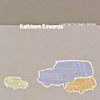 The much-hyped alt-country troubadour commemorates her long tour in support of her debut album Failerwith this short but sweet live EP/DVD. The DVD portion is just thevideos for the first two tracks on the debut, "Six O'Clock News" and"One More Song the Radio Won't Like." They're quaint, simple affairsthat really don't follow the plots of the songs but show off the manyfaces of Edwards, so the videos themselves are a bit of filler. Clipslike these are for fans only anyway, as if you didn't see it on TV andit wasn't a hit, you'll never see it again. In that regard then,they're a nice addition. The live tracks aren't filler at all,thankfully, as they really show off how Edwards can lay it on thickwhen she wants to. In promoting the record, she appeared on all thelate-night talk shows, performed the single, schmoozed it up. But theperformances themselves on the shows were lacking, honestly, as if thiswas just another in a long line of essential evils that needed to befulfilled. On the EP's tracks, recorded — obviously — at the Bowery inNew York, Edwards lets her hair down and feels the songs a bit more.And though her voice warbles a bit here and there, it's not adetraction and she still comes off as great as all the hype makes hersound. "National Steel" was my favorite track on her album, and it getsthe full treatment, frailty and all, with small changes in voice hereand there as needed. Edwards starts it off alone, but when the bandkicks in, let's just say I hope she's paying them what they deserve,cause they bring it full scale. Guitarist Colin Cripps adds great licksand capable backing vocals, too, making the songs sound darn near theirstudio counterparts in tone. "Hockey Skates" next, and it's obvious howmuch the fans love it as they cheer it on when it starts. It's looser,and Edwards lazes her way through it, but no matter as it's still agreat song. Closing out the too short experience is a clever cover ofAC/DC's "Money Talks." It shows Edwards influences, sense of humor, andability to throw a good curve. I wish the EP had been longer, but it'senough to tide fans like me over until the next awe-strikingfull-length.
The much-hyped alt-country troubadour commemorates her long tour in support of her debut album Failerwith this short but sweet live EP/DVD. The DVD portion is just thevideos for the first two tracks on the debut, "Six O'Clock News" and"One More Song the Radio Won't Like." They're quaint, simple affairsthat really don't follow the plots of the songs but show off the manyfaces of Edwards, so the videos themselves are a bit of filler. Clipslike these are for fans only anyway, as if you didn't see it on TV andit wasn't a hit, you'll never see it again. In that regard then,they're a nice addition. The live tracks aren't filler at all,thankfully, as they really show off how Edwards can lay it on thickwhen she wants to. In promoting the record, she appeared on all thelate-night talk shows, performed the single, schmoozed it up. But theperformances themselves on the shows were lacking, honestly, as if thiswas just another in a long line of essential evils that needed to befulfilled. On the EP's tracks, recorded — obviously — at the Bowery inNew York, Edwards lets her hair down and feels the songs a bit more.And though her voice warbles a bit here and there, it's not adetraction and she still comes off as great as all the hype makes hersound. "National Steel" was my favorite track on her album, and it getsthe full treatment, frailty and all, with small changes in voice hereand there as needed. Edwards starts it off alone, but when the bandkicks in, let's just say I hope she's paying them what they deserve,cause they bring it full scale. Guitarist Colin Cripps adds great licksand capable backing vocals, too, making the songs sound darn near theirstudio counterparts in tone. "Hockey Skates" next, and it's obvious howmuch the fans love it as they cheer it on when it starts. It's looser,and Edwards lazes her way through it, but no matter as it's still agreat song. Closing out the too short experience is a clever cover ofAC/DC's "Money Talks." It shows Edwards influences, sense of humor, andability to throw a good curve. I wish the EP had been longer, but it'senough to tide fans like me over until the next awe-strikingfull-length. samples:
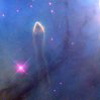
If he is mentioned at all, Martijn de Kleer is mentioned primarily for his job as twice lead guitarist and youngest member of The Legendary Pink Dots. Produced by LPD mainstay Raymond Steeg, and boasting guest appearances from drummer Cevin Key (Tear Garden, Skinny Puppy) and bassist Ryan Moore, So Close Yet So Far Out uses an impressive variety of approaches and instrumentation, by far outstripping any of the usual implications of a solo guitar album. In addition to playing some deliciously fried fuzz guitar, de Kleer also tackles bass, synthesizer, organ and some surprisingly passable vocals. What he accomplishes is a psych-rock long-player with shades of damaged 60's psychedelia, shoegazer pop, and a clear affection for the rich, textural space dementia of Hallway of the Gods-era LPD.
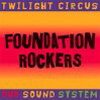 Ryan Moore's bedroom dub albums have taken him far beyond any of theacclaim and recognition of his stint as the bassist for the LegendaryPink Dots, garnering almost unanimous critical praise. Twilight CircusDub Sound System succeeds because of its deceptive simplicity; themusic seems to be an alarmingly precise and studied recreation of theoriginal, groundbreaking 1970s dub by progenitors King Tubby and LeePerry. The warm, organic textures, the unashamedly melodic basslines,the deliberately messy live instrumentation and atmposphere arecompletely without peer on the current scene, dominated byboundary-pushing German artists such as Pole and Rhythm & Sound,who often surgically excise reggae's soul in their clinical pursuit ofpost-dub experimentalism. All of Moore's albums up to this point havebeen exclusively instrumental dub, using a minimal palette to portrayhis signature sound. After eight or so albums however, this limitingformula would have become repetitive to all but the most hardcoreclassic dub fans. Foundation Rockerstakes a deliberate step into new waters — a collection of vocal dubs bya number of great Jamaican vocalists with full horn sections andtop-notch production. I am happy to report that the album is abeautiful accomplishment — a warm, wet, nuanced album that is entirelyredolent of classic dub productions, but with a creative edge thatkeeps it from becoming a retro exercise. The legendary Big Youthcontributes the de rigeur antiwar vocals on "Love Is What We Need," amellow, vibe-y song that gets even better after it's been dipped intothe Amsterdam bongwater on "Dub Is What We Need." Luciano's laments forpeace and unity float alongside Moore's gloriously rocksteady rhythmsand vibratory bassline on "What We Got To Do." "Alpha Skank" in aninstrumental track spotlighting the talents of the Might Three Hornsbrass section that lend their considerable talents to the whole album.Every track is a winner here, but Mykal Rose's particularly hauntingcrooning on "No Burial," as well as Moore's heartbreaking guitar fills,push the song to the top of the heap. Foundation Rockers is anextraordinarily lovely album of reverential dub reggae that exceedsexpectations and delivers on the promises of Moore's back catalog.
Ryan Moore's bedroom dub albums have taken him far beyond any of theacclaim and recognition of his stint as the bassist for the LegendaryPink Dots, garnering almost unanimous critical praise. Twilight CircusDub Sound System succeeds because of its deceptive simplicity; themusic seems to be an alarmingly precise and studied recreation of theoriginal, groundbreaking 1970s dub by progenitors King Tubby and LeePerry. The warm, organic textures, the unashamedly melodic basslines,the deliberately messy live instrumentation and atmposphere arecompletely without peer on the current scene, dominated byboundary-pushing German artists such as Pole and Rhythm & Sound,who often surgically excise reggae's soul in their clinical pursuit ofpost-dub experimentalism. All of Moore's albums up to this point havebeen exclusively instrumental dub, using a minimal palette to portrayhis signature sound. After eight or so albums however, this limitingformula would have become repetitive to all but the most hardcoreclassic dub fans. Foundation Rockerstakes a deliberate step into new waters — a collection of vocal dubs bya number of great Jamaican vocalists with full horn sections andtop-notch production. I am happy to report that the album is abeautiful accomplishment — a warm, wet, nuanced album that is entirelyredolent of classic dub productions, but with a creative edge thatkeeps it from becoming a retro exercise. The legendary Big Youthcontributes the de rigeur antiwar vocals on "Love Is What We Need," amellow, vibe-y song that gets even better after it's been dipped intothe Amsterdam bongwater on "Dub Is What We Need." Luciano's laments forpeace and unity float alongside Moore's gloriously rocksteady rhythmsand vibratory bassline on "What We Got To Do." "Alpha Skank" in aninstrumental track spotlighting the talents of the Might Three Hornsbrass section that lend their considerable talents to the whole album.Every track is a winner here, but Mykal Rose's particularly hauntingcrooning on "No Burial," as well as Moore's heartbreaking guitar fills,push the song to the top of the heap. Foundation Rockers is anextraordinarily lovely album of reverential dub reggae that exceedsexpectations and delivers on the promises of Moore's back catalog. Greg Davis' music is difficult to not like. If abstract computer musicis at all your thing (and it occasionally is mine), Davis' is nothingif not pleasant. It exudes a serene positiveness—an easy and smilingwarmth. The music of this disc, culled from a live radio session onVPRO in Amsterdam and featuring songs that appeared on his previouslyreleased albums and singles, appears to be grounded in folk and popsongs with the structures gently splayed into digital dots. StephanMathieu and Christian Fennesz tread along paths such as this one, butDavis' music is remarkable in that, despite the random bleeping noises,there are no sharp edges to it at all. It's inoffensive, innocuous,fading into the background just as readily as it intruiges (to thosewho wish to engage it in this manner) with the richness of itscomponent sounds. When Davis finally sings and plays acoustic guitar inthe Beach Boys cover that closes this album, I imagine him sitting withhis laptop at the bedside of a child, tucking her in and lulling her tosleep. Or else he's sitting on a swing in some lush garden on a sunnyafternoon, soaking in the sun and running some loose melodies through aMax patch. This could easily veer off into Nobukazu Takemura-likequasi-New Age drool, but somehow it remains tasteful. Only a real cyniccould not smile along with him.
Greg Davis' music is difficult to not like. If abstract computer musicis at all your thing (and it occasionally is mine), Davis' is nothingif not pleasant. It exudes a serene positiveness—an easy and smilingwarmth. The music of this disc, culled from a live radio session onVPRO in Amsterdam and featuring songs that appeared on his previouslyreleased albums and singles, appears to be grounded in folk and popsongs with the structures gently splayed into digital dots. StephanMathieu and Christian Fennesz tread along paths such as this one, butDavis' music is remarkable in that, despite the random bleeping noises,there are no sharp edges to it at all. It's inoffensive, innocuous,fading into the background just as readily as it intruiges (to thosewho wish to engage it in this manner) with the richness of itscomponent sounds. When Davis finally sings and plays acoustic guitar inthe Beach Boys cover that closes this album, I imagine him sitting withhis laptop at the bedside of a child, tucking her in and lulling her tosleep. Or else he's sitting on a swing in some lush garden on a sunnyafternoon, soaking in the sun and running some loose melodies through aMax patch. This could easily veer off into Nobukazu Takemura-likequasi-New Age drool, but somehow it remains tasteful. Only a real cyniccould not smile along with him. 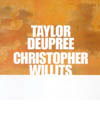 This collaboration began during a performance at Tonic in NYC celebrating the release of Willits' Folding, and the Tea,still one of my favorites on Deupree's 12k label. Willits' style ofguitar processing, a method he calls "folding," involves the digitalreassembling of plucked rhythms and melodies in a way that resists bothfragment pile-up techniques and a tired glitch aesthetic. Theaccurately "folded" results show evidence of computerized cuts, falsestops, and redirections, but each piece also retains the timbre andirregular sustain of the guitar itself, as if Willits' laptop were justanother pedal at his feet, each uncanny alteration arriving seamlessly,swift as the click of a heel. Folding would not be asimpressive, however, if the guitarist's playing were not sounderhandedly melancholic. Without the rolling minor chords of someonelike Fennesz, Willits brings emotion to his music in a more subtle way,producing fragile, staggered tonal clusters, taking on weight only asthey are creased and misaligned during the "folding" process. The "tea"to which his debut's title refers is clearly not the skyward,psychedelic brew filling fellow lap-tarist Joseph Suchy's glass, butmore like a strong herbal black, the kind meant to accompany sittingand staring into surfaces. Taylor Deupree's earthbound approach tomicro-tonal sound arrangement is a perfect match for the concentrated,tactile element of Willits' work. Fostered by the growth of his 12kimprint, Deupree's now-mature style has developed around a minimalistdissection of sound, a mapping of sound particles in a way that, likeWillits', avoids an obsession with glitch-ist process, ordeconstruction per se. Instead, Deupree, along with the expanding 12kroster, favors a highly suggestive magnification of sound events thatfeels wholly related to human gesture and the surrounding world, fullof miniature drama and plaintive tug. Most of the music on Audiosphere 08comes from live sessions where Deupree uses Willits' guitar, run firstthrough the folding box, as source material for his microsoundinvestigations. The live setup creates a kind of circular dialogueresulting in some remarkably focused compositions. Up close, theproduct of the collaboration is predictable: the dominance of Willits'guitar gives the tunes a buoyancy and a more present melodic portionthan Deupree is used to, and the latter's position in the backgroundsituates the guitar's colorful folds in a crisp stew of tiny sounds,ranging from the static skips and jumps more typical of Deupree's solooutput to assertive drones, pulsing as if stripped from the core of aplucked string. At greater remove, isolating each musician'scontribution becomes not only impossible, but a easily forgotteninterference in the enjoyment of these tracks, so much so that the twosolo live tracks also included make for an interesting look at just howmuch one of these guys brings to the table. As a release, Audioshere 08holds up surprisingly well among the intimidating previous output ofits contributors, and as a collaboration, this music is a stunningachievement, a beautiful rounded sound that leaves me hoping this duowill record again.
This collaboration began during a performance at Tonic in NYC celebrating the release of Willits' Folding, and the Tea,still one of my favorites on Deupree's 12k label. Willits' style ofguitar processing, a method he calls "folding," involves the digitalreassembling of plucked rhythms and melodies in a way that resists bothfragment pile-up techniques and a tired glitch aesthetic. Theaccurately "folded" results show evidence of computerized cuts, falsestops, and redirections, but each piece also retains the timbre andirregular sustain of the guitar itself, as if Willits' laptop were justanother pedal at his feet, each uncanny alteration arriving seamlessly,swift as the click of a heel. Folding would not be asimpressive, however, if the guitarist's playing were not sounderhandedly melancholic. Without the rolling minor chords of someonelike Fennesz, Willits brings emotion to his music in a more subtle way,producing fragile, staggered tonal clusters, taking on weight only asthey are creased and misaligned during the "folding" process. The "tea"to which his debut's title refers is clearly not the skyward,psychedelic brew filling fellow lap-tarist Joseph Suchy's glass, butmore like a strong herbal black, the kind meant to accompany sittingand staring into surfaces. Taylor Deupree's earthbound approach tomicro-tonal sound arrangement is a perfect match for the concentrated,tactile element of Willits' work. Fostered by the growth of his 12kimprint, Deupree's now-mature style has developed around a minimalistdissection of sound, a mapping of sound particles in a way that, likeWillits', avoids an obsession with glitch-ist process, ordeconstruction per se. Instead, Deupree, along with the expanding 12kroster, favors a highly suggestive magnification of sound events thatfeels wholly related to human gesture and the surrounding world, fullof miniature drama and plaintive tug. Most of the music on Audiosphere 08comes from live sessions where Deupree uses Willits' guitar, run firstthrough the folding box, as source material for his microsoundinvestigations. The live setup creates a kind of circular dialogueresulting in some remarkably focused compositions. Up close, theproduct of the collaboration is predictable: the dominance of Willits'guitar gives the tunes a buoyancy and a more present melodic portionthan Deupree is used to, and the latter's position in the backgroundsituates the guitar's colorful folds in a crisp stew of tiny sounds,ranging from the static skips and jumps more typical of Deupree's solooutput to assertive drones, pulsing as if stripped from the core of aplucked string. At greater remove, isolating each musician'scontribution becomes not only impossible, but a easily forgotteninterference in the enjoyment of these tracks, so much so that the twosolo live tracks also included make for an interesting look at just howmuch one of these guys brings to the table. As a release, Audioshere 08holds up surprisingly well among the intimidating previous output ofits contributors, and as a collaboration, this music is a stunningachievement, a beautiful rounded sound that leaves me hoping this duowill record again.samples:
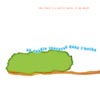 Dekorder is a new label/distributor based in Hamburg and founded by thesame people behind the now-defunct Disco Bruit imprint. Kicking offwith an impressive group of 3" discs and 10" records, the label seemsto pick up where Bruit left off, furthering its juxtaposition of thebubbly, cut-and-paste electronica dominating labels like Sonig anddarker digital landscaping characteristic of groups like Jazzkammer andnew Hafler Trio. Dekorder's first release comes from Barcelona-basedmulti-instrumentalist Un Caddie Renvers? Dans l'Herbe who has justreleased a full-length CD on the label, breaking up their 3"/10"streak. If this mini-disc is any indication of the sound of his newermaterial, I can comfortably recommend hunting it down. The music flowsfrom an impressive range of sources, including a number of Sub-Saharaninstruments, cello and guitar, all fed through software to createsparse but effective compositions that develop in a deceptive,half-improvised manner sometimes reminiscent of the work of Sack &Blumm. The sound of the Mbira (thumb-piano) dominates much of thedisc's 20 minutes, cut into elaborate chiming patterns, never gaudy,and invaluable to the continental vibe drifting off most everything.The laptop thankfully sticks to the background of Weird Taste,performing cutting and looping functions almost exclusively, lettingthe soul of the instruments and Un Caddie's breezy playing do most ofthe talking. Even at their most repetitive, the artist's piano andguitar figures maintain a hypnotic, truly cinematic bent thatimmediately separates the music from the majority of small-formatlaptop productions. Un Caddie has many more releases, including severalthrough his own Ooze.Bap label and the newer Dekorder release Like A Packed Cupboard But Quite?, making this 3" the perfect introduction to a refreshing new face that will undoubtedly provide for future discoveries.
Dekorder is a new label/distributor based in Hamburg and founded by thesame people behind the now-defunct Disco Bruit imprint. Kicking offwith an impressive group of 3" discs and 10" records, the label seemsto pick up where Bruit left off, furthering its juxtaposition of thebubbly, cut-and-paste electronica dominating labels like Sonig anddarker digital landscaping characteristic of groups like Jazzkammer andnew Hafler Trio. Dekorder's first release comes from Barcelona-basedmulti-instrumentalist Un Caddie Renvers? Dans l'Herbe who has justreleased a full-length CD on the label, breaking up their 3"/10"streak. If this mini-disc is any indication of the sound of his newermaterial, I can comfortably recommend hunting it down. The music flowsfrom an impressive range of sources, including a number of Sub-Saharaninstruments, cello and guitar, all fed through software to createsparse but effective compositions that develop in a deceptive,half-improvised manner sometimes reminiscent of the work of Sack &Blumm. The sound of the Mbira (thumb-piano) dominates much of thedisc's 20 minutes, cut into elaborate chiming patterns, never gaudy,and invaluable to the continental vibe drifting off most everything.The laptop thankfully sticks to the background of Weird Taste,performing cutting and looping functions almost exclusively, lettingthe soul of the instruments and Un Caddie's breezy playing do most ofthe talking. Even at their most repetitive, the artist's piano andguitar figures maintain a hypnotic, truly cinematic bent thatimmediately separates the music from the majority of small-formatlaptop productions. Un Caddie has many more releases, including severalthrough his own Ooze.Bap label and the newer Dekorder release Like A Packed Cupboard But Quite?, making this 3" the perfect introduction to a refreshing new face that will undoubtedly provide for future discoveries. samples:
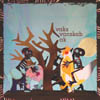 For the second Dekorder release, Denmark's Voks delivers a 3" thatlacks Un Caddie's adventurous sound-grabbing, but is no less colorful.With former releases including a spot on Goodiepal's V/VM 7" series,Voks makes intensely na?ve computer music, revealing an obsession fortoy instrument sounds and dawdling, childlike rhythms. These songs arenot playful in the punky, campy style of artists like DAT Politics orthe oddball fringe of the Sonig label; instead, Vaks Vanskab Akis more of a mood piece, despite its more flamboyant qualities. Tracksreject dominant melodic roles; rather, sounds scatter in loosecompliment of each other, haphazardly forming recognizable motifs, likethe loose Middle Eastern feel that invades songs like "Hottenslot" and"Tuuie." The disc acts like a scatterbrained attempt at scoring anabsurdist's animated short, full of swift mood swings but with enoughopen space to imply corresponding action or visual reference. Vaks Vanskab Akwould make a perfect backdrop for the bizarre puppet show pictured onits cover in which skeletal figures ride elephants and giant chickens,though I'd warn against extending its 20-min. length. Voks shows acharming command over his arsenal of tinkering toys and popping synthsounds, but a move to larger format will require a furtherconsolidating of ideas and perhaps some NyQuil for the manic innerchild who gets carried away ad nauseam on a few of these.
For the second Dekorder release, Denmark's Voks delivers a 3" thatlacks Un Caddie's adventurous sound-grabbing, but is no less colorful.With former releases including a spot on Goodiepal's V/VM 7" series,Voks makes intensely na?ve computer music, revealing an obsession fortoy instrument sounds and dawdling, childlike rhythms. These songs arenot playful in the punky, campy style of artists like DAT Politics orthe oddball fringe of the Sonig label; instead, Vaks Vanskab Akis more of a mood piece, despite its more flamboyant qualities. Tracksreject dominant melodic roles; rather, sounds scatter in loosecompliment of each other, haphazardly forming recognizable motifs, likethe loose Middle Eastern feel that invades songs like "Hottenslot" and"Tuuie." The disc acts like a scatterbrained attempt at scoring anabsurdist's animated short, full of swift mood swings but with enoughopen space to imply corresponding action or visual reference. Vaks Vanskab Akwould make a perfect backdrop for the bizarre puppet show pictured onits cover in which skeletal figures ride elephants and giant chickens,though I'd warn against extending its 20-min. length. Voks shows acharming command over his arsenal of tinkering toys and popping synthsounds, but a move to larger format will require a furtherconsolidating of ideas and perhaps some NyQuil for the manic innerchild who gets carried away ad nauseam on a few of these.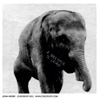 Dekorder 003 comes from John Hegre, a mainstay in both the pop andexperimental scenes in Norway as a member of established pop groupKaptein Kaliber and one half of the amazing electro-acoustic improv duoJazzkammer. The first full release under his own name, "A Nice Place ToLeave" is understandably more in line with his work with Jazzkammer, a3" disc consisting of three improv pieces produced with primitiveelectronics, guitar, computer, and what sound like obscured fieldrecordings. The songs are sparser than most Jazzkammer, but they avoida meditative end as all three seem to hinge on the element of surprisewith brutal, physical sounds consistently puncturing the atmosphericpassages. The first track builds on a looped guitar drone sounding likea gigantic bell pounded at low volume. To this repetitive sound, Hegreadds bits of static and synthetic sound, threatening a kind of rhythmicprogression, though the track never picks up, ending instead withpremature insistence as the electronic hums and pulses grow louder andmore prominent before throwing themselves into concentrated blasts ofnoise, terminating seconds before speakers are blown. The second trackis drone-heavy and uneventful until nuanced guitar noise, fallingthings, and what sound like birdcalls made by a modem begin to sectionoff the cold mass of sound, easing it into a crisp, grinding stop. Theclosing track picks up the looping guitar from the first, making clearthat A Nice Placeis really one long piece, bookended by these drones which could beeasily extended and remain interesting. Hegre keeps the noise largelyabsent from this final section as he does (relatively) for most of thedisc, making it less memorable than most of his other works, but noless captivating. His grasp on timing and successful juxtaposition isas apparent as ever, and I can only hope Dekorder has a full-length instore from this always-interesting artist.
Dekorder 003 comes from John Hegre, a mainstay in both the pop andexperimental scenes in Norway as a member of established pop groupKaptein Kaliber and one half of the amazing electro-acoustic improv duoJazzkammer. The first full release under his own name, "A Nice Place ToLeave" is understandably more in line with his work with Jazzkammer, a3" disc consisting of three improv pieces produced with primitiveelectronics, guitar, computer, and what sound like obscured fieldrecordings. The songs are sparser than most Jazzkammer, but they avoida meditative end as all three seem to hinge on the element of surprisewith brutal, physical sounds consistently puncturing the atmosphericpassages. The first track builds on a looped guitar drone sounding likea gigantic bell pounded at low volume. To this repetitive sound, Hegreadds bits of static and synthetic sound, threatening a kind of rhythmicprogression, though the track never picks up, ending instead withpremature insistence as the electronic hums and pulses grow louder andmore prominent before throwing themselves into concentrated blasts ofnoise, terminating seconds before speakers are blown. The second trackis drone-heavy and uneventful until nuanced guitar noise, fallingthings, and what sound like birdcalls made by a modem begin to sectionoff the cold mass of sound, easing it into a crisp, grinding stop. Theclosing track picks up the looping guitar from the first, making clearthat A Nice Placeis really one long piece, bookended by these drones which could beeasily extended and remain interesting. Hegre keeps the noise largelyabsent from this final section as he does (relatively) for most of thedisc, making it less memorable than most of his other works, but noless captivating. His grasp on timing and successful juxtaposition isas apparent as ever, and I can only hope Dekorder has a full-length instore from this always-interesting artist. samples:
 Resina is the cooperative effort of Retina.it and Marco Messina, twowell-known electronic-based entities who experiment with a multitude ofstyles and themes in achieving their unique brands of glitch music. AsResina, they manage structures that may be complicated and not whollyelectronic — as they pass all their scrambings through analog equipmentduring recording/assembly — but they are ultimately conventional andvaguely uninteresting. Not to belittle the effort or the final producttoo much, but these songs work from the same canvas and paints with nottoo much variety, which makes for a static listening experience thatcould be better spent on more challenging fare. If there are differentthemes to these songs, I missed them, as they all sound remarkablysimilar. It seems like too many electronic artists concentrate on onlythe aesthetic of the contrivance instead of on melody and the songitself. Resina do some things extremely well: beat structure and fulluse of all frequencies; layered sound effects and the odd sample thrownin; working from one point and building to another in a predictable butstill non-jarring way. All things considered, though, once you've heardone track you've heard them all. Similar computerized beats continuethroughout the album, almost to the point where on the first listen Icould predict where the beat/song would go next, like a clarivoyantconductor of a synthetic orchestra. There's a wealth of experience withResina, that much is clear, and having never heard the personnelinvolved I can't relate this to their other works. But I think at thisstage they'd have learned there's more to electronic music than this.
Resina is the cooperative effort of Retina.it and Marco Messina, twowell-known electronic-based entities who experiment with a multitude ofstyles and themes in achieving their unique brands of glitch music. AsResina, they manage structures that may be complicated and not whollyelectronic — as they pass all their scrambings through analog equipmentduring recording/assembly — but they are ultimately conventional andvaguely uninteresting. Not to belittle the effort or the final producttoo much, but these songs work from the same canvas and paints with nottoo much variety, which makes for a static listening experience thatcould be better spent on more challenging fare. If there are differentthemes to these songs, I missed them, as they all sound remarkablysimilar. It seems like too many electronic artists concentrate on onlythe aesthetic of the contrivance instead of on melody and the songitself. Resina do some things extremely well: beat structure and fulluse of all frequencies; layered sound effects and the odd sample thrownin; working from one point and building to another in a predictable butstill non-jarring way. All things considered, though, once you've heardone track you've heard them all. Similar computerized beats continuethroughout the album, almost to the point where on the first listen Icould predict where the beat/song would go next, like a clarivoyantconductor of a synthetic orchestra. There's a wealth of experience withResina, that much is clear, and having never heard the personnelinvolved I can't relate this to their other works. But I think at thisstage they'd have learned there's more to electronic music than this.samples:
 My initial reaction upon learning of the "Garden" CD was that the twocomposers are an unlikely pairing. Menche is known for his malevolent,very physical noise. Mizutani, who came to many listeners' attention asan original member of Merzbow, has focused on documentary recordings ofbirds and natural environments in recent years. Even stranger is theirdecision to divide the tonal specturm in half for their album together,with Menche producing only the low sounds and Mizutani the high ones.What on earth could this be? To be honest, after repeated listens, I'mstill unsure. The music is one hour-long piece, with the divisionbetween the artists' contributions quite pronounced throughout. I foundthis distracting, as I attempted to resolve in my mind the deepsub-bass rumble (from Menche) and the twittering birds and insects(Mizutani), which certainly seems to have been produced in isolation ofone another and simply grafted together. Not that some lovely momentsdon't occour; the initial eleven minutes are riveting, the oddjuxtaposition of elements creating a tension that just doesn't sustainitself for the hour. I was never able to forget the conceptual conceitand hear "Garden" as a single piece of music. Perhaps this was anintentional decision by the artists, but it does not work for me.
My initial reaction upon learning of the "Garden" CD was that the twocomposers are an unlikely pairing. Menche is known for his malevolent,very physical noise. Mizutani, who came to many listeners' attention asan original member of Merzbow, has focused on documentary recordings ofbirds and natural environments in recent years. Even stranger is theirdecision to divide the tonal specturm in half for their album together,with Menche producing only the low sounds and Mizutani the high ones.What on earth could this be? To be honest, after repeated listens, I'mstill unsure. The music is one hour-long piece, with the divisionbetween the artists' contributions quite pronounced throughout. I foundthis distracting, as I attempted to resolve in my mind the deepsub-bass rumble (from Menche) and the twittering birds and insects(Mizutani), which certainly seems to have been produced in isolation ofone another and simply grafted together. Not that some lovely momentsdon't occour; the initial eleven minutes are riveting, the oddjuxtaposition of elements creating a tension that just doesn't sustainitself for the hour. I was never able to forget the conceptual conceitand hear "Garden" as a single piece of music. Perhaps this was anintentional decision by the artists, but it does not work for me. samples:
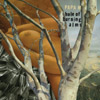 Drew Daniel of Matmos once said something to the effect of Dave Pajobeing one of those people whose musical and artistic talents are justbeyond comprehension, to the point that can make a number of peoplejealous. Pajo's guitar talents can be heard from releases stretchingback to the late 1980s with Slint (even earlier with more obscurebands' records that can probably not be located anywhere), continuingon into the 1990s with King Kong, Palace, Tortoise, and appearanceswith Stereolab, Royal Trux, and For Carnation live. In 1995, hereleased something as M, then M is the Thirteenth Letter, then AerialM, before settling on Papa M. It's important to note that recordingscollected here does not compile -the definitive singles collection- (itwould span more than three discs with today's technology), however, itdoes form a strong album of coherent material that can be listened topretty much within the catalogue of his first three releases throughDrag City: Aerial M, Post Global Music, and Live from a Shark Cage.In addition, it does sort of close the book on the musical style whichhas come to pass for him: the music is instrumental, and slowly, overtime, it evolves as Pajo gets more comfortable working with newelements of compositional style, instrumentation, and recordingtechnique. Opening with the first couple 7" singles, the group is avery basic guitar/bass/drums lineup. It's not until track five,"Mountains Have Ears," that Pajo begins to employ drum machines andcomputer recording techniques. While it gets more electronic, Pajocombats it with more traditional routes: following another mildlyelectronic piece "Vivea" is "Last Caress," a Misfits cover which isprobably the first release with Dave on the microphone. (This songwasn't the beginning of his vocal career as it wasn't until after thealbum Live from a Shark Cage that Pajo began to sing on nearly everything.) Some of the more obscure recordings include the 13+ minute Travels in Constantstrack, previously available only by subscription to the TemporaryResidence series and two Christmas singles only available to luckypeople on Drag City's mailing lists—one of them being the 16+ minutecover of "Turn, Turn, Turn," where the band (now more than just Dave)just planned to play until the four-track tape ran out. Speaking toPajo, there are considerations in releasing more singles collections inthe future, but, for now, for those who missed these things the firsttime around, your second chance to enjoy these awesome tunes hasarrived. The compilation is available now if you see him on tour and ina couple weeks if you can't get out or the tour comes nowhere near you.
Drew Daniel of Matmos once said something to the effect of Dave Pajobeing one of those people whose musical and artistic talents are justbeyond comprehension, to the point that can make a number of peoplejealous. Pajo's guitar talents can be heard from releases stretchingback to the late 1980s with Slint (even earlier with more obscurebands' records that can probably not be located anywhere), continuingon into the 1990s with King Kong, Palace, Tortoise, and appearanceswith Stereolab, Royal Trux, and For Carnation live. In 1995, hereleased something as M, then M is the Thirteenth Letter, then AerialM, before settling on Papa M. It's important to note that recordingscollected here does not compile -the definitive singles collection- (itwould span more than three discs with today's technology), however, itdoes form a strong album of coherent material that can be listened topretty much within the catalogue of his first three releases throughDrag City: Aerial M, Post Global Music, and Live from a Shark Cage.In addition, it does sort of close the book on the musical style whichhas come to pass for him: the music is instrumental, and slowly, overtime, it evolves as Pajo gets more comfortable working with newelements of compositional style, instrumentation, and recordingtechnique. Opening with the first couple 7" singles, the group is avery basic guitar/bass/drums lineup. It's not until track five,"Mountains Have Ears," that Pajo begins to employ drum machines andcomputer recording techniques. While it gets more electronic, Pajocombats it with more traditional routes: following another mildlyelectronic piece "Vivea" is "Last Caress," a Misfits cover which isprobably the first release with Dave on the microphone. (This songwasn't the beginning of his vocal career as it wasn't until after thealbum Live from a Shark Cage that Pajo began to sing on nearly everything.) Some of the more obscure recordings include the 13+ minute Travels in Constantstrack, previously available only by subscription to the TemporaryResidence series and two Christmas singles only available to luckypeople on Drag City's mailing lists—one of them being the 16+ minutecover of "Turn, Turn, Turn," where the band (now more than just Dave)just planned to play until the four-track tape ran out. Speaking toPajo, there are considerations in releasing more singles collections inthe future, but, for now, for those who missed these things the firsttime around, your second chance to enjoy these awesome tunes hasarrived. The compilation is available now if you see him on tour and ina couple weeks if you can't get out or the tour comes nowhere near you.samples:
 Esmerine are being called a gy!be off-shoot as the core members — BruceCawdron and Beckie Foon #151; have played on various releases relatedto the Montreal collective. At the same time that the label gets them acertain amount of attention, I think it belittles the power of theirmusic at the same time, as this is not just a plaything to occupy sometime while the members wait for a new gy!be or Silver Mt. Zion record.Through very simple means, Esmerine have concocted one of the mostmoving records I've heard, mostly using simple percussion and cellowith some guest musicians to round out some of the compositions. First,there is beauty in the music itself, as the cello has the ability toextract tears from even the staunchest individual. Next, the perussionis mostly marimba or light drumming, which keeps a nice pace, but alsocuts the more overbearing moments of the strings with a slightlylighter tone. Mostly, though, the compositions themselves arebreathtaking, with moments of pure heartrending glory. There aremoments of bombast that hint at some heavy firepower, but Esmerinemostly lock it away; like offering a glance at the weapon, knowingthere's a larger psychological impact than brandishing it every fiveminutes. "Red Fire Alarm" starts off quiet, then builds to a boisteroustete-a-tete between all instruments. Eventually, the song lies down fora nap, slowly fading off into a deep sleep. The epic journey of thesecond track may turn some off, but the interplay of the strings withthe very quiet drone behind them is quite stirring. Elsewhere, there isthe lighter feel of "Tungsten" and the experimentation of "Luna Park"and "The Marvellous Engines of Resistance" to offer a smattering ofstyles with equally pleasing results. As the album finally nears itsend, the true demons finally come out, and it's worth every measure. Asound debut, and much more than some of the buzz words make it out tobe.
Esmerine are being called a gy!be off-shoot as the core members — BruceCawdron and Beckie Foon #151; have played on various releases relatedto the Montreal collective. At the same time that the label gets them acertain amount of attention, I think it belittles the power of theirmusic at the same time, as this is not just a plaything to occupy sometime while the members wait for a new gy!be or Silver Mt. Zion record.Through very simple means, Esmerine have concocted one of the mostmoving records I've heard, mostly using simple percussion and cellowith some guest musicians to round out some of the compositions. First,there is beauty in the music itself, as the cello has the ability toextract tears from even the staunchest individual. Next, the perussionis mostly marimba or light drumming, which keeps a nice pace, but alsocuts the more overbearing moments of the strings with a slightlylighter tone. Mostly, though, the compositions themselves arebreathtaking, with moments of pure heartrending glory. There aremoments of bombast that hint at some heavy firepower, but Esmerinemostly lock it away; like offering a glance at the weapon, knowingthere's a larger psychological impact than brandishing it every fiveminutes. "Red Fire Alarm" starts off quiet, then builds to a boisteroustete-a-tete between all instruments. Eventually, the song lies down fora nap, slowly fading off into a deep sleep. The epic journey of thesecond track may turn some off, but the interplay of the strings withthe very quiet drone behind them is quite stirring. Elsewhere, there isthe lighter feel of "Tungsten" and the experimentation of "Luna Park"and "The Marvellous Engines of Resistance" to offer a smattering ofstyles with equally pleasing results. As the album finally nears itsend, the true demons finally come out, and it's worth every measure. Asound debut, and much more than some of the buzz words make it out tobe. samples:



